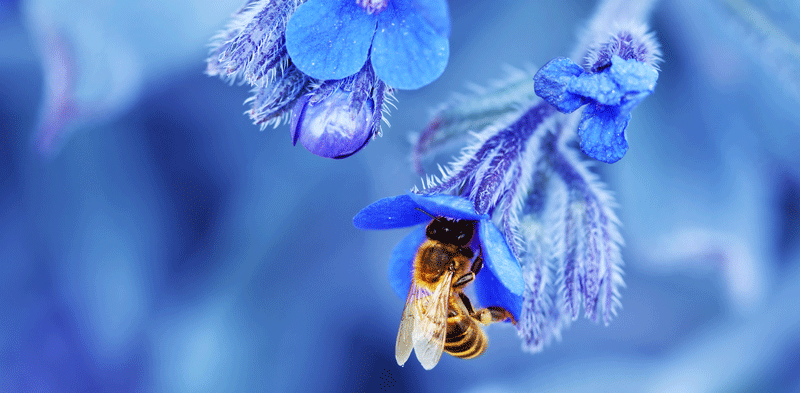Hi folks! In this week’s Botany Club Science Discussion, we are going to be talking about bees! Specifically, how the physiology of their eyes may have selected for the evolution of certain flower colors over others.
 We all know how we, as humans, can select for specific features in plants (flower shape, color and size just to name a few) through selective breeding. We change the appearance of the world around us every day! But how is this done in nature? The world around us vibrates with color; some more noticeable than others. Who, or what, is responsible for selecting the color palate of the flowers we find around us? In a study conducted in Australia in 2012, scientists set out to answer that question.
We all know how we, as humans, can select for specific features in plants (flower shape, color and size just to name a few) through selective breeding. We change the appearance of the world around us every day! But how is this done in nature? The world around us vibrates with color; some more noticeable than others. Who, or what, is responsible for selecting the color palate of the flowers we find around us? In a study conducted in Australia in 2012, scientists set out to answer that question.
Flowering plant species rely on animal vectors to transfer their pollen to reproduce. Put simply, plants that have rewarding flowers that are easy to detect will be more likely to attract animal vectors. This increases the probability of spreading their gametes, and in turn the likelihood of successfully reproducing.
Honeybees, bumblebees and other insects of the hymenoptera species are among the major pollinators of flowering plants. These species have a tendency to repeatedly visit one type of flower, as long as that flower continues to provide rewards. Thus, flowers that are able to attract and maintain flower-constant pollinators significantly increase their fitness benefits.
Now, this is where bees come in. Honeybees have trichromatic color vision. This color vision is based on ultraviolet (UV) blue-green sensitive photoreceptors and make wavelengths around 400 and 500 nm most easily discriminated.
Scientists collected over 100 Australian native flowers and took UV photographs of each. With these photos, they were able to measure the wavelengths of UV-reflectance areas of the flowers. They found that a high frequency of flowers converged on 400 and 500 nm wavelength reflectances.
From these findings, along with supporting studies, they proposed that hymenopteran color vision influenced the development of flower color in Australia and the Northern Hemisphere. The selective pressures of bees and other animal vectors on flowers, along with the rewards provided by flowers, allowed them to coevolve over millions of years. Flowers that were more easily distinguishable and beneficial to their animal vectors were able to reproduce with stronger fitness. Selective pressures from hymenopteran trichromats in isolated areas favored parallel evolution of flowers with specific wavelengths.
That’s all for this week! Check back in next Monday to start your week off with another science discussion!
Written by:
Nzoni Thompson
